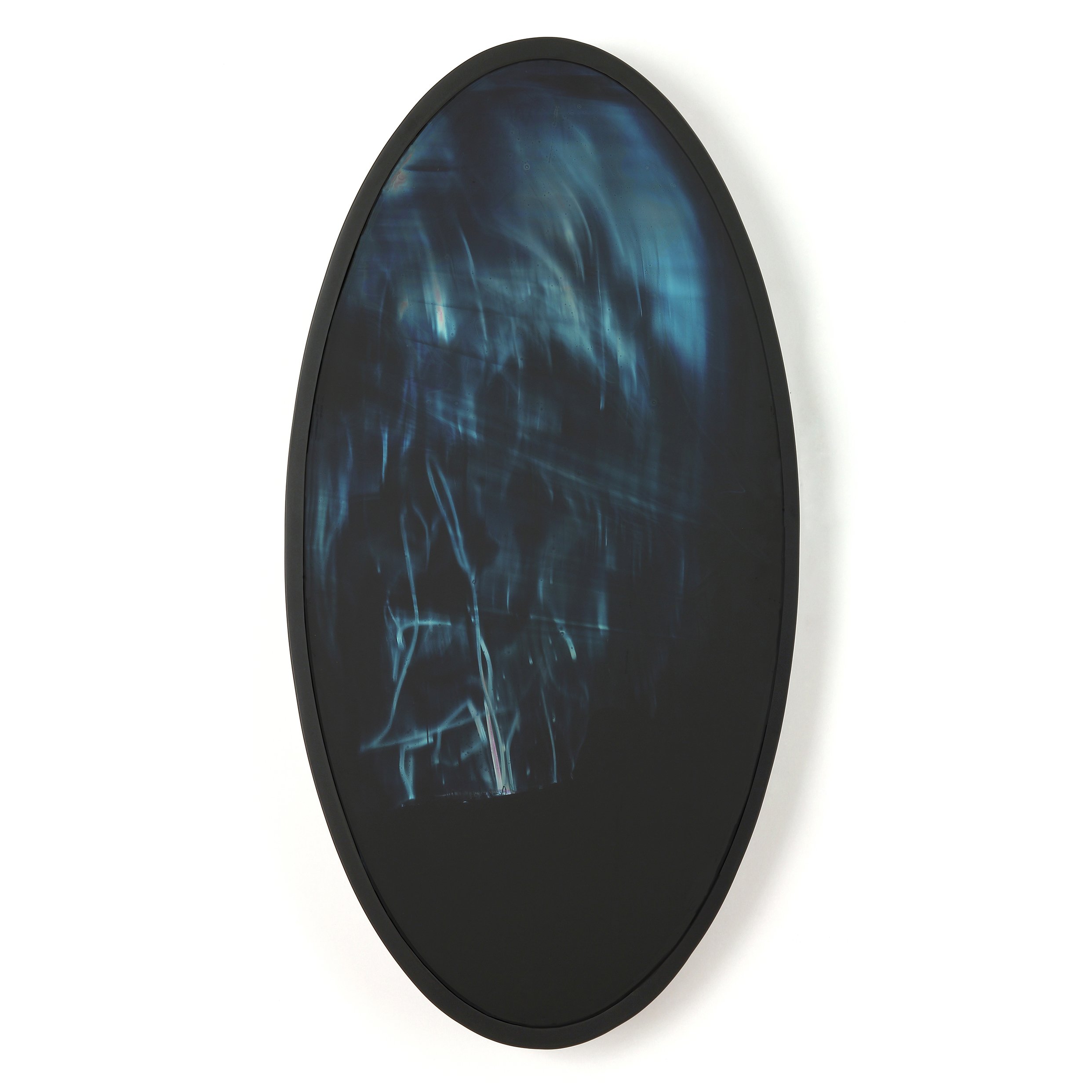PROJECT STATEMENTS: NANO + Mirror
THAT WE MAY SEE THINGS IN A CHAMBER THAT ARE NOT
That We May See in a Chamber Things That Are Not 2, 3. Silver nanoparticles on glass. 36 x 17 inches, 2017.
These paintings grew out of my long-time artist-in-residency in the Alivisatos Lab, a nanoscience lab at the University of California at Berkeley. There, I studied and synthesized structurally colored nanoparticles smaller than wavelengths of light. I use these particles as paint.
My paintings made with nanomaterials are experiments in visual instability. The works’ fugitive appearance is contingent upon precise relationships between object and viewer, light and darkness. This, coupled with imagery seemingly composed of vapors, gives a viewer the sense they are witnessing something not all-together of this world.
The series’ title refers to 16th-century polymath Giambattista della Porta’s description of the optical illusion now known as Pepper’s Ghost. The Victorians used this technique to create projections of ghosts in theatrical productions. I invoke this history to suggest that, as with art, advances in the sciences have long been driven by dual desires: to see what is, and what is not.
Visible Signs of Indeterminate Meaning
Visible Signs of Indeterminate Meaning 14. Silver nanoparticle paint and silver mirroring on glass. 12 x 15.5 inches, 2015.
Painting with silver nanoparticles, I became fascinated by early experiments harnessing silver’s sensitivity to light and x-rays: Victorian photographs and radiographs. As I painted, I found myself thinking about early photographs of the moon. These are striking objects: delicate films of silver on polished metal plates that, when tilted this way and that in a viewer’s hand, appear as reflective and changeable as the moon itself. The surfaces of my paintings behave in much the same way, lending them an almost ghostly presence. It’s fitting then, that when I look at them, my mind turns to Victorian spirit photographers’ efforts to take the most ethereal of subjects and fix them in a form that could be held in one’s hand. There’s a delicious symmetry here with the legacy of radiography, which used x-rays to render solid flesh and bone as ethereal as any ghost.
IN THEM WE SEE OURSELVES
In Them We See Ourselves 12. Silver nanoparticles on glass. 32 x 16 inches, 2017.
In Them We See Ourselves is a series of paintings that juxtaposes contemporary nanotechnology with Victorian-era mirror-making technology. Recipes developed by Victorian mirror-makers were foundational to much of contemporary metallic nanoparticle synthesis. It’s no surprise, then, that each echoes elements of the other.
Standing before these reflective surfaces, we recognize ourselves—both in our reflections and in the silvery forms that suggest elements of our own anatomy. Though these images are non-representational, they evoke clamshells and shore, supernova and viscera. The reason for this could be the way in which they are made—by fluid fronts advancing and retreating, flowing until they meet an obstacle, then pooling in pits, folds, and gullies.
Figments
Figment 1. Silver nanoparticles on glass. 19 x 22 inches, 2015.
Created for the 2015 Article Biennial in Stavanger, Norway, Figments flash and hide, flickering in and out of visibility. Making Figments, I was thinking about the possibility of wholly human-designed organisms. As an artist deeply engaged with nanoscience and with CRISPR, I’m interested in the creative possibilities presented by our abilities to control matter at the nanoscale—the scale at which bodies make themselves.



